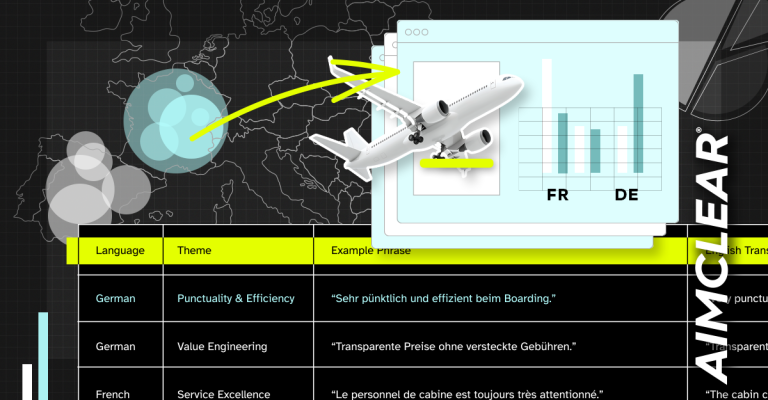Ah, competitive intelligence. It’s got to be one of the most alluring aspects of online marketing, requiring the typically upstanding online marketer to get down ‘n dirty with delicious data and illuminating insight on the competition. Yes, for a certain portion of our day, we marketers get to kick off our work shoes and lace up combat boots, loosen our ties and don green berets, as we sneak through the forests of the Interwebz in search of information we can leverage to exploit competitors’ weaknesses and pounce on areas of opportunity… in short: get a leg-up in a dog eat dog world.
Those who stuck it through Day 3 of last week’s #PubCon Vegas were in for a sweet session devoted specifically to top-shelf Competitive Intelligence Tools & Tactics. Jane Copland, Search Marketing Consultant, Ayima Search Marketing, Matt Siltala, President, Dream Systems Media and Michael Streko, Co-Founder / Owner, KnowEm LLC each took the stage and shared their favorite tips, tactics, tools and takeaways on how to spy in cyberspace with sophistication. For those unable to *cough* make it to the conference due to a late night of partying catching up on work emails, we decided to showcase the gems here for you to consume at your leisure. Read on for the full effect.
Streko was up first. Here’s what our pal from Jersey had to say.
What You Should Try To Gain From Competitive Intelligence
Every approach to online marketing needs a clear idea of goals. Here’s what Streko aims to unlock with competitive intelligence:
- My competitor’s next move
- Who they’re working with
- What their flaws are
- How much $$$ they are making
- How much they are spending to make money $$$
Ways to Find the “Next Move”
You’re not a mind-reader. But here are some awesome ways you can glean what your competitor might be up to next…
- Search their code! Mmmm, code-snooping…
- Get all up in their robots.txt!
- Search for KWs like setup, test, blog, forums – these KWs could indicate things that haven’t launch yet, but give you a sneak peek at what’s up their sleeves
- How to avoid this happening to your own site? Never use robots.txt if you have something to hide!
Who Are Possible Partners of Your Competitors?
Know thy enemy! But also… know who are the friends of your enemy 🙂
- Twitter – Monitor your competitors’ tweet-stream to see who they talk to, who they follow, and who follows them.
- Tool:
DoTheyFollowEachOther.com– slap in two Twitter handles and behold!
- Tool:
- LinkedIn – Follow competitor’s company on LinkedIn, note growth and new ventures, keep tabs on employees, make note if someone updates their job info, reflecting a promotion, or departure from the company (hmmm then maybe reach out with an InMail and ask why they left…)
- Facebook – Like them on Facebook (maybe you want to create a dummy account for this… against FB TOS, you didn’t hear it from me!), know who likes their page, who engages their content, how well is their content engaged, etc…
What’s Up With Their Site?
Dig into the specifics of your competitors’ site(s) to better understand what they’re doing right and what they’re doing wrong. Squirrel your way in sneakily, where you can 🙂
- Track site traffic with tools like
Compete.com, Alexa.com - Advertising opportunities? Take out advertising on their site 😉
“If they are using AdWords or another platform… Buy. Ads.” – Streko
- Basic competitive intel’ tools:
SEMRsch.com& SpyFu.com
- What domains do they own? Order a domain report from DomainTools.com (cost estimated $55.00), or do it the ghetto way:
- Google: [site:whois.domaintools.com “Competitors Name” owns about]
- Become an affiliate! Muahahaha. Some affiliate networks will show EPC (earnings per click) of how the program is going. See what they are willing to pay affiliates. Ask if you can speak to some of their top affiliates for “recommendations” of how to push traffic or tactics they are using. Oh so naughty.
- Non-Internet bonus tactic: Call them on the phone. Act like your’e interested in using their service, becoming a customer. “Do you have beta stuff I can see?” etc.
Streko wrapped up and turned it over to Matt Siltala.
“Never Stop Spying,” his presentation was titled, and dove straight into three main questions to ask yourself as you travel down the competitive intel’ road.
- Q1: Who are your online competitors?
- Q2: What are you doing?
- Q3: Do you have a plan, a checklist?
If you don’t know who your competition is, then there’s no way you can know what they’re doing, and by extension, what you plan to do! Ergo, you have no plan! Get started now! Here’s 10 things you should be checking as you keep these three questions in mind:
- Page Authority: Tools like Open Site Explorer, Majestic SEO, Raven Tools are good places to start. Page authority, together with domain authority, are two of the most important factors to pay mind to. You want to see the strength of the people you’re up against, how much effort you will need to surpassing them.
- Total Links: This includes top backlinks and referring domains. Anything you can find about links, find it out. Class C subnets are essential.
- Social Media Activity: Trackur, Google Alerts, Netbase, Facebook, etc. Monitor it all!
- LinkedIn: Similar to Streko’s recommended usage – Matt points out that LinkedIn is a great spot to pop in and poach people, scoping out the content they share, new hires, etc.
“Use it as a tool, even if you haven’t figured out how to use it to get leads… use it.” -Matt Siltala on LinkedIn
- Blogs: Are you competitors blogging? What’s the engagement like? What’s the content like? Is it viral? Check out the Social Media for FireFox (or Chrome) plugin. You can use it to run an analysis on any URL and bring back the data for how popular the content was, where it went, etc.
- Use Other Spider Tools: Check out Xenu, Screaming Frog. These tools export list of all pages with noindex tags and can help you find broken links on websites.
- Affiliate Programs: What big affiliates do they (or you) have promoting product or service?
- Shopping Cart Spying: Never stop sniffing what’s in the code.
- Spying In General – Scope out ReverseInternet.com, Outwit, turn off Google Instant, SEOmoz Pro for KW & SERP analysis, Raven Tools checklist, etc.
Jane was up next with a very dense and comprehensive preso. Here’s the top takeaways from her deck:
Link Building & Competitive Analysis
- The first rule of competitive analysis: Never try to replicate anyone else’s backlink profile.
- Competitive intelligence is about finding out what metrics to compete on.
What to Pay Attention To
- Market overview – estimated traffic, number of occurrences in top 30 for 200 KWs, Google’s volume estimates, estimated CTR for those KWs, etc.
- Track market changes – see who is moving up or moving down. In doing so, you’ll never really be taken by surprise.
- Keep an eye on site moving quickly up the rankings in order to jump into their recently-acquired backlinks.
- Pay attention to why they have the links they have- know their “newspaper links.”
- Know their “relationship links,” in other words, links they didn’t pay for. Never replicate someone’s relationship link.
- Track links and rankings over time. Such functionality is available through Majestic SEO, and eventually will be available through LinkScape.
- Remember: Looking through at backlit profiles only tells you a 2-D version of a 3-D story
Link Networks: What They Are, How They Work, & How You Can Detect & Beat Them
It is vital to know a link network when you’re faced with one so you don’t wast time approaching it for links. Few people are creative enough, caution enough or risky enough to create a truly great link network, Jane points out. Networks add to that infamous churn rate. Often, network sites won’t stay online very long.
Good link networks don’t just link to the client / hubsite – they will join kto a range of sites, and then each site in the network will link to the hub. Most network sites are not diverse in their subject.
Jane advises not just looking at C Class IPs when detecting a network – people know about disguising their classes, but are far less scrupulous with their B Classes. C Classes are often sequential.
Beware: Just because the network domains don’t show up in OSE does not mean they don’t exist. Some may not have been crawled by LinkScape yet. Many share commonalities in design that can be searched for manually, such as:
- Site structure in terms of URLs
- Common artwork, file name for images
- Common entertainment features, widgets
- Common ways to link out (or link to ads)
- Acting as affiliate for other sites (their IDs give them away!)
Beware: If sites are working from a template, many won’t be fleshed out – if a site shares design elements and links to pages, some of which don’t exist, you can be sure you’re looking at a network.
Leverage sites like DomainTools.com, FlagFox for a look at hosting info & IP Addresses, etc.
Wrapping up, Jane reiterated her biggest piece of advice for the crowd, which I shall re-paraphrase here: Don’t try to copy your competition. Use competitive intel to understand what metrics to compete on, then… whoop their bums.








